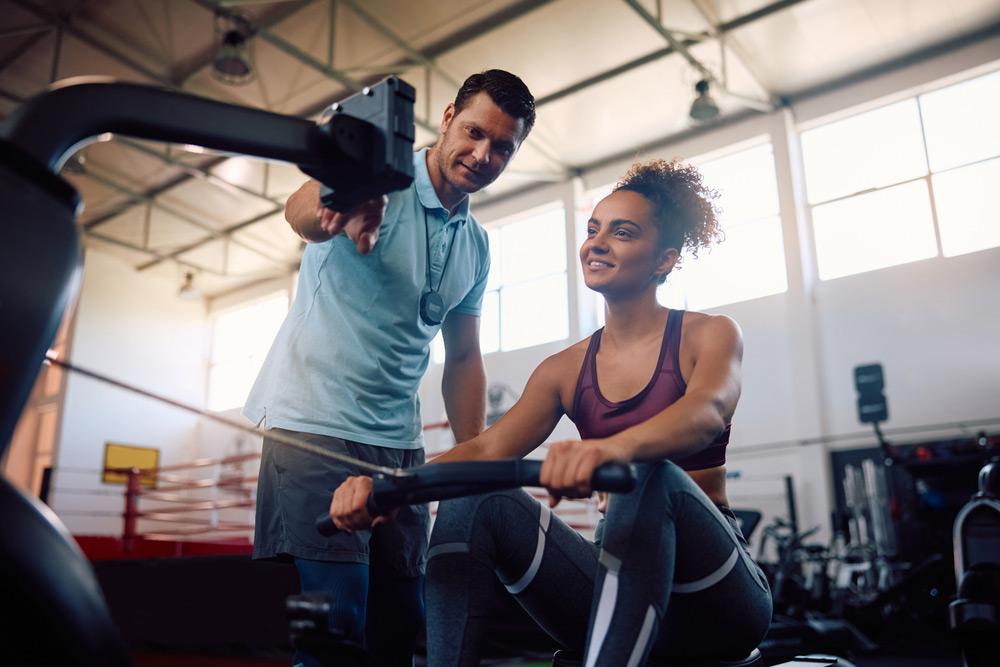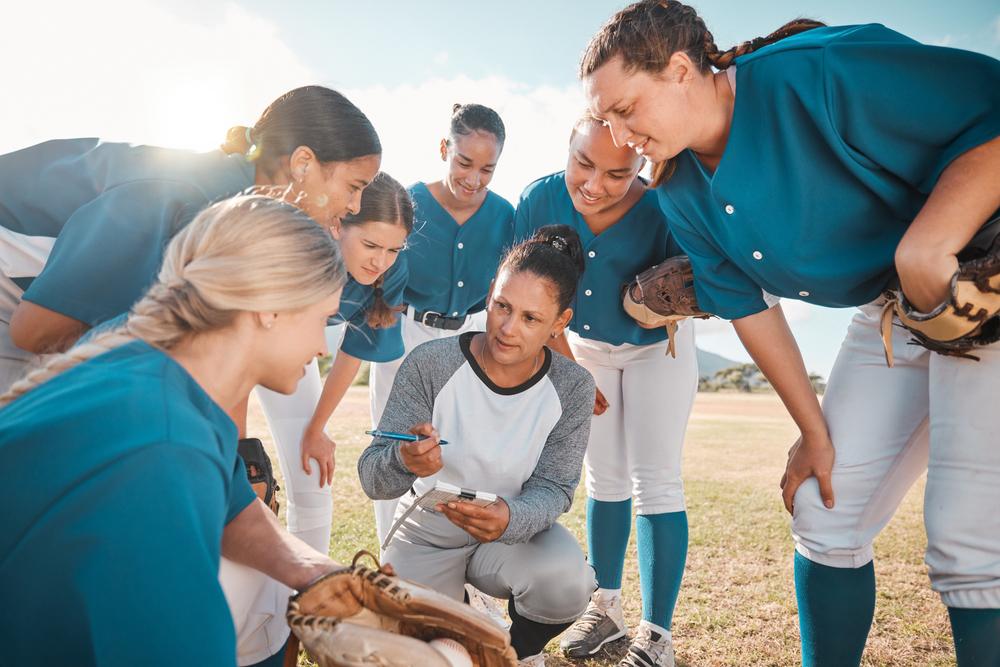 Is your athlete juggling a summer job, training camps, off-season competitions, summer classes, volunteer hours, and maybe some down time with friends? It’s easy for young athletes to end up over-extended in the summer, and while a packed schedule isn’t necessarily a bad thing, not every athlete is equipped to handle such a heavy load.
Is your athlete juggling a summer job, training camps, off-season competitions, summer classes, volunteer hours, and maybe some down time with friends? It’s easy for young athletes to end up over-extended in the summer, and while a packed schedule isn’t necessarily a bad thing, not every athlete is equipped to handle such a heavy load.
Here, TrueSport Expert Amanda Stanec, PhD, the founder and owner of MOVE + LIVE + LEARN, is talking about how to help young athletes actually enjoy their leisure time so that when school rolls around, they’re refreshed and recharged, not on the edge of burnout.
Every athlete is different
If you have more than one child, you likely already know this: What works well for one student athlete may not work for another. “Every student athlete is a unique person,” says Stanec. “An athlete might truly thrive with a lot of structure that requires balancing a job, workouts, practices, and their service commitments, while another may really, really need time to recharge with a much more open schedule. As parents, it’s important that we ask our athletes what makes them feel as though they’re able to thrive and what type of environment they need.” She suggests experimenting: Have one week where your athlete is tightly scheduled with activities, followed by a week with minimal commitments. At the end, assess how each felt, and help your athlete find a good balance.
There are a lot of benefits to working a job
 While athletes are highly individual, it’s hard to ignore the fact that working a summer job can be extremely beneficial for young people. Maybe your athlete only works 10 hours each week, but having a structured job not only lets them earn spending money—teaching them valuable financial lessons from a young age—it also gives them a sense of discipline and humility that they simply might not get from school. “A talented athlete who’s also naturally a great student may not deal with a lot of challenges in their early years,” Stanec says. Working a summer job may provide more challenge, and especially for an athlete from a small school, it gives them a chance to be exposed to a wider landscape of humanity.
While athletes are highly individual, it’s hard to ignore the fact that working a summer job can be extremely beneficial for young people. Maybe your athlete only works 10 hours each week, but having a structured job not only lets them earn spending money—teaching them valuable financial lessons from a young age—it also gives them a sense of discipline and humility that they simply might not get from school. “A talented athlete who’s also naturally a great student may not deal with a lot of challenges in their early years,” Stanec says. Working a summer job may provide more challenge, and especially for an athlete from a small school, it gives them a chance to be exposed to a wider landscape of humanity.
No time for a job? Check the schedule again
“If a student-athlete doesn’t have time for a summer job because of their sport commitment as a high school student, I question their efficiency in what they’re doing in sport. I would fear burnout or overuse injury,” says Stanec.
Your athlete may not have time for a 30-hour per week commitment, but fitting in a 10-hour per week summer job? That should be possible. Otherwise, your athlete may be too tightly scheduled with sport and in need of more rest. If the team truly has so many practices or commitments that it’s impossible to hold a summer job, consider having a discussion with the coach. While some athletes may not have a choice about getting a summer job, no athletic program should be so intense that it eliminates the possibility.
Reconsider devices
 Don’t romanticize an open schedule: You may have fond memories of long summer days spent riding your bike with friends and playing at the pool, but it’s different now, Stanec says. Thanks to smartphones and social media, many kids spend leisure time scrolling on their phones, which can be extremely detrimental to their mental health. “Help your athlete find relaxing activities that aren’t just sitting with a device in their hands,” she says. If you’re trying to set device boundaries for the first time, Stanec suggests having an honest conversation with your athlete about how they feel after an hour of scrolling. Often, she says, when an athlete actually reflects on how social media makes them feel, it’s easier for them to disconnect. (She also notes that kids do model their parents, so check your own scrolling habits as well!)
Don’t romanticize an open schedule: You may have fond memories of long summer days spent riding your bike with friends and playing at the pool, but it’s different now, Stanec says. Thanks to smartphones and social media, many kids spend leisure time scrolling on their phones, which can be extremely detrimental to their mental health. “Help your athlete find relaxing activities that aren’t just sitting with a device in their hands,” she says. If you’re trying to set device boundaries for the first time, Stanec suggests having an honest conversation with your athlete about how they feel after an hour of scrolling. Often, she says, when an athlete actually reflects on how social media makes them feel, it’s easier for them to disconnect. (She also notes that kids do model their parents, so check your own scrolling habits as well!)
Create an environment for creative and relaxing leisure time
Create an environment that allows for easy, fun leisure. That might mean making sure there are bikes in the garage that are the right size for your athletes, or having different outdoor games set up, or creating an artist studio in the basement for a budding painter or potter. Whenever possible, set boundaries around screen time. This can get tricky if your athlete is an avid YouTuber who’s making creative videos, but you can try getting an inexpensive digital video camera and turning off the Wi-Fi in the house during certain hours to minimize TikTok and Instagram scrolling.
Lastly, don’t turn leisure time into something that’s just as rigid as a summer job: If your athlete needs a nap, wants to read for an afternoon, or wants to hang out with friends watching a movie, that’s perfectly fine.
Look for warning signs
 Some young athletes will allow themselves to become over scheduled and overwhelmed in the pursuit of scholastic, sport, and social perfection, which can be incredibly damaging, says Stanec. Your athlete might be capable of having a job, a training program, a summer class at the community college, a secondary sport camp, and volunteer hours—or they might be on the verge of burnout. Look for warning signs like increased anxiety, trouble sleeping, difficulty concentrating, or anything outside of normal behavior patterns for your athlete. Also make sure to regularly check in with them to ensure they’re still feeling comfortable with their tight schedules. Some athletes will head into a packed summer feeling great about their decision, only to feel exhausted after a few weeks. Often, they won’t want to quit or cut back on hours themselves, or will feel uncomfortable having that conversation with a coach or boss. You can help them navigate those tough discussions.
Some young athletes will allow themselves to become over scheduled and overwhelmed in the pursuit of scholastic, sport, and social perfection, which can be incredibly damaging, says Stanec. Your athlete might be capable of having a job, a training program, a summer class at the community college, a secondary sport camp, and volunteer hours—or they might be on the verge of burnout. Look for warning signs like increased anxiety, trouble sleeping, difficulty concentrating, or anything outside of normal behavior patterns for your athlete. Also make sure to regularly check in with them to ensure they’re still feeling comfortable with their tight schedules. Some athletes will head into a packed summer feeling great about their decision, only to feel exhausted after a few weeks. Often, they won’t want to quit or cut back on hours themselves, or will feel uncomfortable having that conversation with a coach or boss. You can help them navigate those tough discussions.
__________________________
Takeaway
There is no formula for the right balance of busyness and activities for kids—it’s highly individual for every child. Ongoing discussions will help ensure the right balance for your athlete, and along the way, you can help them find summer activities that feel rewarding, enriching, and fun.



